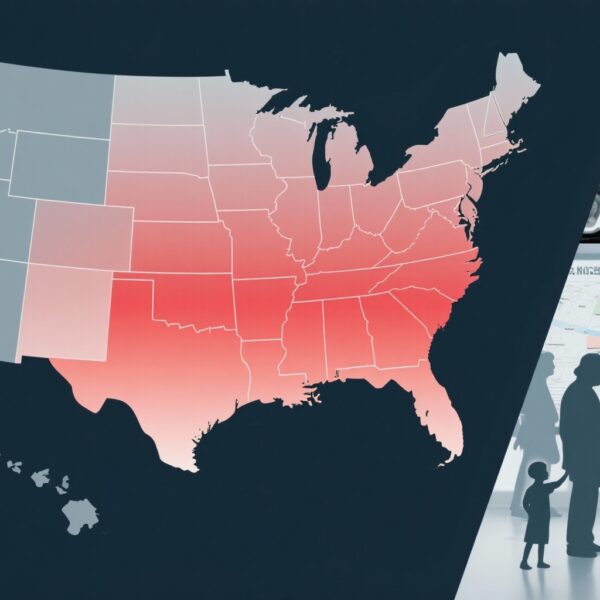Highlights
– A 24‑week multicomponent frailty program in a rural Korean cohort produced a mean 6.53‑month increase in survival free from all‑cause mortality or long‑term care eligibility at 66 months (95% CI, 1.38–11.68 months).
– Health service–use costs were lower in the intervention group, yielding a per‑person NHIS saving of $7,688 (95% CI, 1,197–14,615) over 66 months and a cost:benefit ratio of 8.82.
– Benefits were driven mainly by fewer hospitalizations and reduced long‑term care utilization; findings support broader deployment of tailored community frailty programs but require confirmation in randomized and diverse settings.
Background
Frailty is an age‑related clinical state of reduced physiologic reserve that increases vulnerability to stressors and predicts adverse outcomes including disability, hospitalization, institutionalization, and death. Population ageing worldwide and rising prevalence of frailty pose clinical and economic challenges for health systems and social care programs. Multicomponent interventions — typically combining exercise, nutrition, medication review, psychosocial support, and home safety measures — are recommended to prevent or attenuate frailty, but most trials report short‑term functional outcomes. Evidence on long‑term health and economic impacts is sparse, limiting policy decisions about investment in community‑based frailty programs.
Study design
The report by Ji et al. (JAMA Network Open, 2025) presents an economic evaluation based on the Aging Study of Pyeongchang Rural Area‑Intervention Study, a nonrandomized clinical trial conducted August 2015–January 2017. Participants were socioeconomically vulnerable adults aged ≥65 years who either lived alone or received medical aid in a rural Korean community. Volunteers enrolled in the 24‑week multicomponent intervention; those who declined served as contemporaneous controls.
Key features:
- Intervention components: structured exercise and nutrition for all participants, with depression management, deprescribing, and home hazard reduction added according to individual risk profiles.
- Follow-up and outcome ascertainment: individual‑level data were linked to National Health Insurance Service (NHIS) claims through December 2021 to capture survival, long‑term care insurance eligibility, and health service costs over a 66‑month horizon.
- Comparative approach: propensity score matching (frailty, functional status, demographics, comorbidities, depression, and prior health service use) formed 119 matched pairs for analysis, reducing measured confounding between volunteers and controls.
- Primary composite outcome: time free from all‑cause mortality or eligibility for long‑term care insurance over 66 months. Cost outcomes included cumulative NHIS‑paid service costs and cost:benefit ratios (incremental NHIS savings relative to per‑person intervention cost).
Key findings
Sample and matching: Among 383 eligible adults (187 volunteers; 196 controls), NHIS linkage succeeded for 181 and 192 individuals, respectively. After propensity matching, analyses included 119 matched pairs (n = 238); the cohort was older (68.9% aged ≥75 years) and predominantly female (74.4%). Baseline characteristics balanced on the matching covariates.
Clinical outcomes
Participants in the intervention group experienced longer composite outcome‑free survival at 66 months. The mean difference in months free from death or long‑term care eligibility was 6.53 months (95% CI, 1.38–11.68) favoring the intervention. Although the study did not present randomized causal estimates, the magnitude and persistence of the benefit over 5.5 years is notable given the short 24‑week active intervention period.
Health service use and costs
From the NHIS payer perspective, cumulative health service‑use costs were consistently lower among intervention participants across the follow‑up period. The per‑person difference in NHIS costs at 66 months was a saving of $7,688 (95% CI, 1,197–14,615), primarily attributable to fewer hospital admissions and lower long‑term care utilization. When incremental NHIS savings were compared to intervention delivery costs, the computed cost:benefit ratio was 8.82, indicating that every dollar spent on the intervention returned approximately $8.82 in reduced NHIS expenditures over 66 months.
Sensitivity and subgroup observations
The published report emphasized consistent cost savings over time and cited hospitalization and long‑term care cost reductions as dominant drivers. Outcomes in clinically relevant subgroups (for example, degree of baseline frailty or specific comorbidities) were not the primary focus of the article; further stratified analyses would help clarify which patients derive the largest benefit.
Expert commentary and interpretation
Context with prior evidence: The benefits observed align with prior trials showing that structured physical activity reduces disability risk (for example, the LIFE study, NEJM 2014) and with systematic reviews that support multicomponent interventions for frailty prevention or amelioration. However, long‑term economic evaluations are uncommon. Ji and colleagues extend the evidence base by linking a relatively brief, pragmatic community program to durable clinical and financial benefits using national claims data.
Biological and programmatic plausibility
Several mechanistic pathways plausibly explain durable benefits from a time‑limited intervention. Exercise and nutrition interventions can increase muscle mass and strength, improve balance, and reduce falls — effects that reduce acute hospitalizations and persistent disability. Deprescribing may lower adverse drug events and hospital admissions, while depression management and home hazard reduction may reduce care dependence. Initial gains in physical reserve and functional independence can cascade into long‑term reductions in care needs.
Strengths
- Real‑world, socioeconomically vulnerable population often underrepresented in trials.
- Long follow‑up (66 months) with objective outcomes via national claims linkage.
- Comprehensive multicomponent program with individualized risk‑based additions (deprescribing, home hazard reduction).
- Use of propensity score matching to address baseline differences between volunteers and controls.
Limitations
- Nonrandomized design: volunteer selection introduces potential for residual confounding despite propensity matching (health motivation, unmeasured social supports, or unmeasured clinical differences).
- Single rural Korean community: generalizability to urban populations, other health systems, or different cultural contexts is uncertain.
- Outcome definition includes long‑term care insurance eligibility, which is a country‑specific policy measure and may not map directly to disability outcomes in other systems.
- NHIS perspective excludes some societal costs (informal caregiving, patient out‑of‑pocket expenses, productivity of caregivers), and detailed intervention cost components were not fully described in the summary report.
Implications for clinicians, health systems, and policy
For clinicians and community health programs, the study suggests that investing in short, structured multicomponent frailty programs — particularly when targeted to socioeconomically vulnerable older adults — can yield measurable clinical benefits and substantial payer savings over several years. For payers and policy makers, the high cost:benefit ratio reported argues that community frailty interventions may be an efficient use of resources, especially if programs are integrated into existing primary care and community services, and if workforce and logistics barriers are addressed.
Recommendations and future research
Practical next steps and research priorities include:
- Replication in randomized trials and in diverse settings (urban, other countries, different health financing models) to reduce selection bias and test external validity.
- Detailed costing and budget‑impact analyses including societal perspectives to quantify total economic returns and distributional effects across stakeholders.
- Implementation research to identify scalable delivery models, workforce training needs (community health workers, physiotherapists), and fidelity‑outcome relationships.
- Subgroup analyses to define which strata (frailty severity, comorbidity clusters, social determinants) obtain the largest net benefit, to inform targeting strategies.
Conclusion
Ji et al. provide compelling real‑world evidence that a 24‑week multicomponent frailty intervention delivered in a rural Korean community was associated with prolonged survival free from death or long‑term care eligibility and reduced health service costs over 66 months. While limitations inherent to nonrandomized designs require cautious interpretation, the magnitude and persistence of clinical and economic benefits support further testing and considered scaling of community‑based multicomponent frailty programs as part of integrated care strategies for older adults.
Funding and trial registration
Funding and trial registration details are reported in the original article: Ji S, Lim J, An TJ, et al. Long‑Term Health and Cost Outcomes of a 24‑Week Multicomponent Frailty Intervention in Older Adults. JAMA Netw Open. 2025. Readers should consult the published manuscript for full funding and conflict‑of‑interest statements and any trial registration identifiers.
References
1. Ji S, Lim J, An TJ, Jang G, Baek JY, Park K, Jung JJ, Cheon SH, Myong JP, Lee YH, Cho J, Lee J, Sohn H, Jang IY. Long‑Term Health and Cost Outcomes of a 24‑Week Multicomponent Frailty Intervention in Older Adults. JAMA Netw Open. 2025 Nov 3;8(11):e2543278. doi: 10.1001/jamanetworkopen.2025.43278. PMID: 41222933; PMCID: PMC12612941.
2. Pahor M, Guralnik JM, Ambrosius WT, et al.; LIFE Study Group. Effect of structured physical activity on prevention of major mobility disability in older adults: The LIFE Study randomized clinical trial. N Engl J Med. 2014;370(14):1348–1357. PMID: 24571745.
3. Fried LP, Tangen CM, Walston J, et al. Frailty in older adults: evidence for a phenotype. J Gerontol A Biol Sci Med Sci. 2001;56(3):M146–156. PMID: 11253156.
4. Apóstolo J, Cooke R, Bobrowicz‑Campos E, et al. Effectiveness of interventions to prevent pre‑frailty and frailty progression in older adults: a systematic review. JBI Database System Rev Implement Rep. 2018;16(1):140–232.
5. World Health Organization. Integrated Care for Older People (ICOPE): guidance for person‑centred assessment and pathways in primary care. WHO; 2019. (see WHO website for guidance documents on integrated care for older people).




This article provides a valuable synthesis of the Ji et al. study, demonstrating meaningful clinical utility in several respects:
**Clinical and Economic Value:**
The comprehensive review effectively contextualizes the significant finding that a brief 24-week intervention yielded sustained benefits over 66 months—a cost:benefit ratio of 8.82 represents compelling evidence for health system investment in community frailty programs. The emphasis on socioeconomically vulnerable populations addresses a critical gap in the literature, where such groups are typically underrepresented.
**Strengths of the Commentary:**
The systematic structure—moving from study design through outcomes to practical implications—enhances accessibility for diverse stakeholders. The balanced discussion of biological plausibility mechanisms (muscle mass preservation, fall reduction, medication optimization) appropriately bridges the intervention components with observed long-term outcomes.
**Areas for Enhancement:**
1. **Intervention Fidelity & Scalability:** The article could benefit from discussing adherence rates during the 24-week program and barriers to real-world implementation. What proportion of participants completed the full intervention? How resource-intensive is delivery?
2. **Subgroup Heterogeneity:** While the text mentions the need for subgroup analyses, it would strengthen clinical applicability to speculate on which frailty phenotypes (e.g., physical vs. cognitive predominant) might benefit most, guiding patient selection in resource-limited settings.
3. **Comparison with Other Models:** Brief mention of how this multicomponent approach compares with alternative strategies (e.g., single-component exercise programs like Otago, comprehensive geriatric assessment models) would help position this intervention within the existing care landscape.
4. **Implementation Context:** Given the rural Korean setting, discussion of adaptations needed for urban environments or different healthcare financing systems (fee-for-service vs. capitated models) would enhance generalizability.
5. **Mediator Analysis:** Future research priorities might include identifying which intervention components drove the greatest benefit—this would inform streamlined, cost-optimized program designs.
Overall, this is a well-constructed commentary that successfully translates research findings into actionable insights for clinicians and policymakers, while appropriately acknowledging methodological limitations inherent to the nonrandomized design.